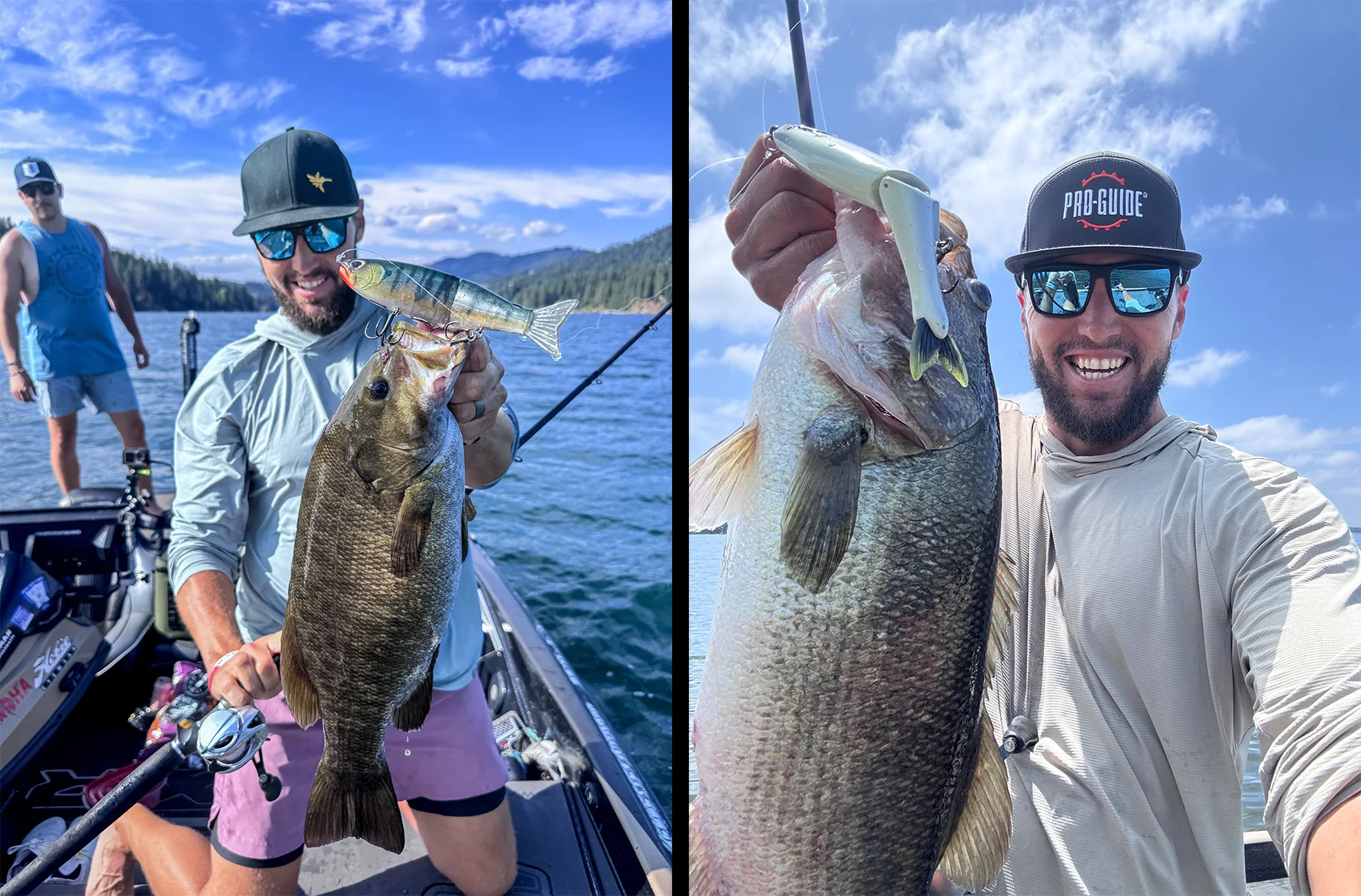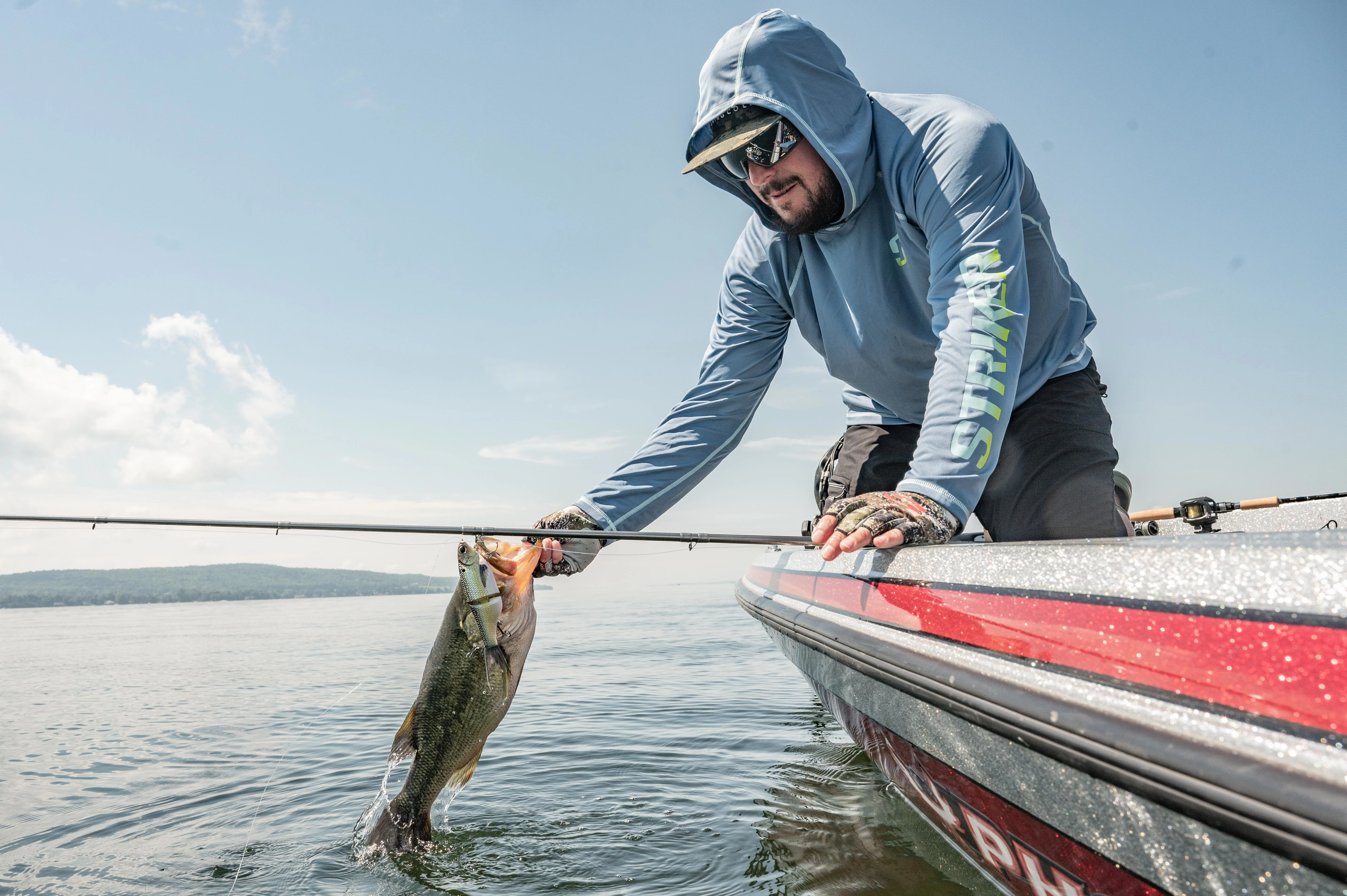Targeting bass with giant glide baits continues to grow in popularity. What used to be a niche technique practiced mostly by West Coast anglers is now mainstream across the country. Traditionally, glide baits came with an expensive price tag that discouraged everyday anglers from investing in the lures. Now, a combination of more affordable baits and the widespread success of this tactic has blown up glide bait fishing everywhere.
Lure manufacturers continue to respond to the growing popularity of this technique by producing more baits in the $25 to $50 range. We noticed this trend at ICAST 2025 with an increase in newly released glide baits and oversized swimbaits. SPRO even introduced a three-in-one mega glide bait—the K-Rig—at this year's show. And there's no sign of this technique slowing down anytime soon.
So how do you fish a 7-inch glide bait? Where do you throw these lures? When are bass most likely to crush one of the massive baits? We sat down with Bassmaster Elite Series Champion and big-bait fanatic, Carl Jocumsen, to hear his top five tips for fishing glides baits. Here's how to catch giant bass on giant baits.

1. Tailor Your Setup
The first and most important step to fishing glide baits is to get a technique-specific setup. That means your rod, reel, and line have to be tailored to casting and handling these giant baits. “Most people make the mistake of trying to put a glide [bait] on their flipping rod," says Jocumsen. "They won't get many bites, and if they do get hit, they'll lose the fish and have a bad experience. That's why it's crucial to have a dedicated glide bait setup.”
Jocumsen’s combo consists of a 7-foot, 10-inch MillerRods Dream Freak extra-heavy that’s designed specifically for glide baits. He pairs that with a Shimano TranX 300 and 22-pound test Sunline Shooter. For the reel, Jocumsen recommends a slow gear ratio in the 5:1 range.
2. Fish the Right Glide Bait
The next step in the process is selecting a quality glide bait that's big, but not too big. You don’t want to go too small, either, according to Jocumsen, because smaller baits don’t garner as much attention from bass. The bigger the bait, the more attention it will get. But there’s a tipping point, where too big of baits wont produce many strikes. You want to be somewhere in the middle.
“A 6- to 7-inch or even an 8-inch bait is where you should start," says Jocumsen. "I have hundreds of glide baits in every size, shape, and color, and I have caught more fish on a Storm Arashi Glide than any other bait. It has just the right shape and action to get bites. Plus, it isn't too expensive”
You don't have to spend a fortune on $100 glide baits to get big bites. Like Jocumsen explains, it's more about the right shape and action. Start by fishing more affordable options and build your big-bait arsenal from there.

3. Water and Color Choice
Conditions play a major role in glide bait productivity. Specifically, water color and clarity will impact the big-bait bite more than anything. Josumsen has found that bass will eat glide baits in both muddy and clear water, but there are some differences.
“The cleaner the water, the more follows you'll get," says Jocumsen. "The dirtier the water, the more commitments and eats you'll get.” He also recommends adjusting your color selection based on the water clarity. Fish more transparent colors in clear water and brighter colors in dirtier water, like pearl, white, and bone.
4. Vary Your Retrieve
The rhythm in which you work your bait also dictates how many strikes you get. Most glide baits have a naturally slow, lumbering, wide glide to them. Some can be “chopped,” which creates fast cuts back and forth. There’s a time and place for both cadences, according to Jocumsen.
“The cleaner the water, the faster you want to work the bait," he says. "The dirtier the water, the slower you want to work it. My favorite cadence is chopping the bait. If you work a glide bait slowly and methodically, bass will almost become mesmerized and follow it, but not necessarily bite it. If you chop the bait, you will get more of a reaction, resulting in aggressive takes.”
Jocumsen will often go back and forth between the two cadences to see what works that day. It’s still “guesswork,” as he calls it. “Generally, as a fish starts to get closer to the bait, you want to increase the speed of the retrieve to make it look like a fleeing baitfish." Often this will produce an aggressive strike, but sometimes it can deter fish. If you notice that bass aren't responding to a back-and-forth rhythm, then switch to a steady, slower retrieve. Once you figure out what speed and cadence the fish like on that particular day, stick with it until the bites slow down.
5. Horse the Fish to the Boat
Another important key to successfully landing a glide bait bass is knowing how to fight them. Sometimes, with other fishing techniques, you want to “play” the fish, fighting it slowly and letting it exhaust itself. But not with glide baits. According to Jocumsen, the reason you want to bulk up your rod, reel, and line is so you can horse the fish in. The big profile of a glide bait gives the fish leverage to work with and makes it easier to throw the lure. So once you stick a bass on a glide bait, crank down and get that fish in as quickly as you can. The longer the fight, the higher the chances of losing the fish.


